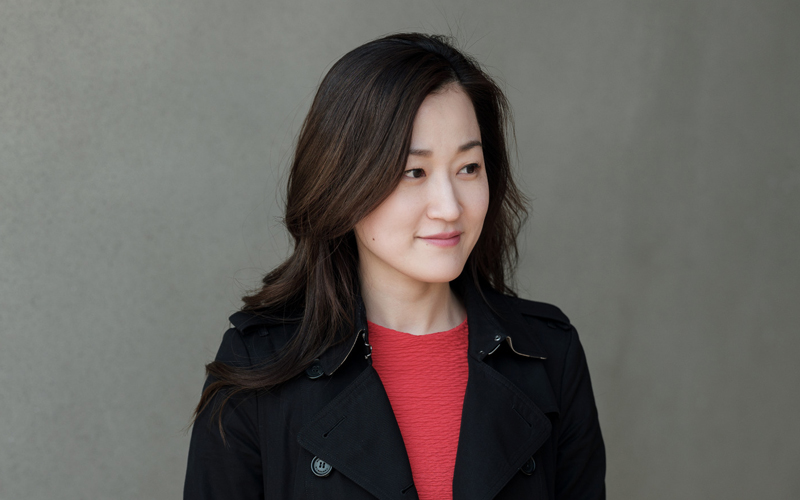Q&A with Boram
This Q&A reflects Boram's time as Director of Marketing & Ad Monetization at CookApps. Currently, Boram is Head of Client Services (APAC) at Twitter.
As the former Director of Marketing at CookApps, a casual gaming publisher, Boram Ku led all mobile marketing efforts including user acquisition, retargeting and re-engagement campaigns on Facebook, Google Ads, and across numerous DSPs. Boram also oversaw ad monetization, app store optimization and customer marketing for more than 20 mobile titles.
Read Boram's latest article: "How to Market Your App from Soft Launch to Global Release"
In your own words, tell us about the apps that you manage?
CookApps produces casual puzzle games such as Match-3 and Bubble Shooters. These games are available globally on Facebook, Android, iOS, and Amazon.
How did you get started in mobile marketing?
Before getting into mobile, I worked for the government in the energy sector doing global marketing. Early on I realized that in order to grow my career in marketing, I needed to be part of a fast-growing industry with the lots of potential. That’s when I found an opportunity in the social gaming market with a company that developed social casino apps for Facebook and mobile platforms globally.
What do you like most about mobile marketing?
In the mobile ecosystem, every aspect of marketing can be measured. Unlike traditional marketing channels such as TV or print, in mobile you can see the impact of your actions and campaign changes instantly, and make quick decisions without wasting the budget. This gives marketers more control and allows us to optimize KPIs in real time.
What does it take to succeed in mobile marketing?
To succeed, you need to constantly monitor your campaigns and act quickly. The mobile ad market runs on a bidding system and can change at any time depending on the actions of other marketers. Because of these volatile conditions, you need to monitor your campaigns 24/7.
What does a quality mobile user look like to you?
This might seem obvious, but a quality user in my world is someone who installs a game, plays it daily, and monetizes. The best user will evangelize the game, and recommend it to acquaintances, friends and family members. Such community-based growth naturally increases not only the quantity of users but also the quality of engagement. We also value users who leave reviews in app stores, even when the review isn’t too flattering. Thanks to those users, we find new ways to improve our games as well as resolve issues that we might otherwise miss.
What strategies work best to convert installs into engaged app users?
Just like fans of a TV show get excited about new episodes, app users love to see new content and events that are well-designed. From a product perspective, it’s also important to ensure that users have things to do inside the game aside from just advancing through levels. These new achievements or “things to do” should provide additional benefits and never be a hassle that prevents the user from progressing in the game.
In the past year, what is one tip you can share which made the biggest performance difference with UA or re-engagement of your app?
My best tip is to test numerous app variables, from characters in the game to the size of the app. Testing can have a massively positive impact and provide insights on how to improve key KPIs such as CTR, CVR (or IR), and ultimately ROAS, which dictates the growth strategy of your app.
Mobile marketing newbies often fall into the trap of trying to lower CPIs. The truth is, the actual bidding is all about CPMs. By focusing on CPM and IR (impression to installs) optimization, you can improve the entire conversion funnel.
To measure the effectiveness of re-engagement campaigns, I recommend setting up a control group so you are not left wondering whether the high ROAS was due to the campaign or simply occurred organically.
How do you stay ahead of changes in technology?
I start my day by reading industry news to keep up with the fast-changing mobile marketing environment. But the best way to acquire information is to talk with a lot of different partners, other marketers in mobile marketing, and attend industry events for learning and networking opportunities.
What do you see as the next big thing in mobile marketing?
App monetization is becoming essential to app growth, so I expect that user acquisition and monetization will merge at some point. The competition in mobile UA will intensify and acquiring quality users to grow will only get harder. A couple of years ago, CookApps began monetizing through ads, and that extra ad revenue has now become a buffer to the increasing cost of acquisition. That’s also why we handle both UA and ad monetization on our marketing team. Because bidding is all done by eCPM, marketers must consider two important things: at what eCPI you can acquire a user, and what eCPM you can get from other advertisers. By balancing these out, marketers will have a clearer idea of maximizing the true LTV of users in your app.
What advice can you offer to help marketers combat mobile ad fraud?
Many great tools today allow marketers to monitor CTIT (click to install time), which can be used to discover fraudulent installs. In reality though, marketers don’t have that much time to see data at such a granular level. Because of this limitation, the best advice is to work with your most trusted partners. When you are ready to expand your channels to scale further, always set hard KPIs and look for quality indicators early on that suggest you should pause your campaign to avoid wasting ad budget.






















